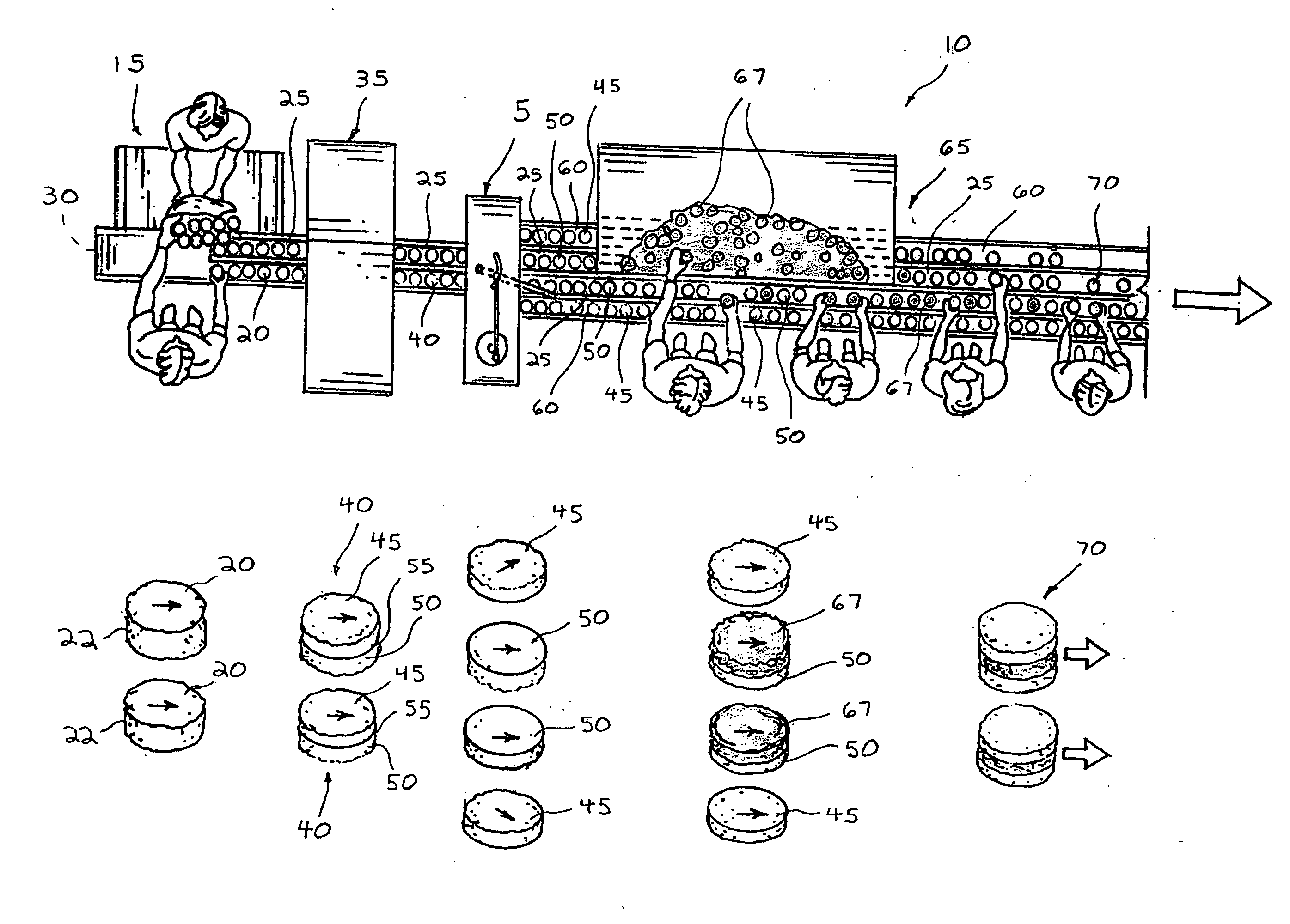Product de-topper
a technology for stacked products and packaging, applied in the directions of dough processing, application, transportation and packaging, etc., can solve the problems of increasing maintenance costs, requiring complex disassembly and cleaning procedures, and undesirable food production downtime, and achieve the effect of facilitating the desired parting or separation of stacked products
- Summary
- Abstract
- Description
- Claims
- Application Information
AI Technical Summary
Benefits of technology
Problems solved by technology
Method used
Image
Examples
Embodiment Construction
[0033] The present invention relates to equipment for assembling food products, and more specifically to an apparatus and method for separating or parting stacked food products during a food production process. The invention, a de-topper, facilitates the desired parting or separation of stacked products along a separation line defining an elevation. For ease of description, the example of sliced, stacked biscuit food products will be used in describing the de-topper, but it is understood that any possible stackable food or non-food product can also be parted or separated by the de-topper as well. FIG. 1 illustrates a plan view of one embodiment of the de-topper 5 as part of a food product production line 10, along with a perspective view of the biscuit food product after each step of the production process. As illustrated in FIG. 1, the line preferably assembles breakfast sandwiches from individual sandwich components comprising sliced biscuits or other breads, meats, cheeses, cooke...
PUM
 Login to View More
Login to View More Abstract
Description
Claims
Application Information
 Login to View More
Login to View More - R&D
- Intellectual Property
- Life Sciences
- Materials
- Tech Scout
- Unparalleled Data Quality
- Higher Quality Content
- 60% Fewer Hallucinations
Browse by: Latest US Patents, China's latest patents, Technical Efficacy Thesaurus, Application Domain, Technology Topic, Popular Technical Reports.
© 2025 PatSnap. All rights reserved.Legal|Privacy policy|Modern Slavery Act Transparency Statement|Sitemap|About US| Contact US: help@patsnap.com



